Driver's License Test 3A

Driver's License Test 3A
Test your knowledge of road signs, traffic signals, and safe driving practices with our comprehensive Driver's License Test 3A. This quiz features 50 carefully crafted questions that will help you prepare for your driving exam.
Whether you're a new driver or looking to refresh your knowledge, you'll find the following:
- Detailed multiple-choice questions
- Instant feedback on your answers
- Useful for all levels of driving experience
Traffic signs and pavement markings must be:
A. Always obeyed
B. Used as guide only
C.Followed only when there is other traffic
D. Followed only when a police officer in present
A red flashing signal means the same as a :
A. Red light
B. Yield sign
C. Stop sign
D. Caution sign
A red traffic signal light means that you must:
A. Stop at the stop line
B. When there is no stop line, stop before entering any crosswalk
C. When there is no stop line or crosswalk, stop before entering the intersection
D. All of the above
A driver facing a circular red traffic light may, if not prohibited by a traffic sign:
A. May turn right after stopping and then yielding to other traffic and pedestrian
B. It is illegal to turn right on red
C. May turn right at any time
D. A driver does not need to stop before turning right if there are no approaching vehicles and it can be done safely
A circular green traffic light means:
A. That you always have the right of way
B. That you may go straight ahead or turn, except where sign prohibit turns
C. Traffic and pedestrians already in the intersection must get out of your way
D.Both “b” and “c”
Traffic facing a yellow traffic signal:
A. This means that the protection of the green light or arrow is ending so you should increase your speed and proceed through the intersection
B. This mean that you must stop until the light or arrow turns green
C. This means that the protection of the green light ort arrow is ending and you may proceed through an intersection if a stop cannot be done safely
D. This means that the light is about to change red so you should hurry through the intersection.
Lighted arrows are sometimes used to control turns from a specific traffic lane. A green arrow:
A. Is used only on one-way streets
B. Means the same as a circular green light, but you must go only in the direction the arrows indicates
C. This means that you may go only if the green arrow is accompanied by a green light
D. This means that you may go only if the green arrow is accompanied by a green light
Certain highway signs and markings require that you must obey the indicated instruction. Such signs are known as:
A. Warning signs
B. Guide Signs
C. Regulatory Signs
D. Information Signs
An orange stop sign might indicate:
A. School crossing is ahead
B. A slippery bridge is ahead
C. Repair equipment and construction ahead
D. A hospital or police station is ahead
Official brown signs indicate:
A. Services such as fuel and lodging are ahead
B. Caution is needed in this area
C. A recreation area is ahead
D. That you should read carefully to stay on your route of travel
Diamond shaped signs mean:
A. Caution
B. Warning
C. Hazzard
D. All of the above
A pennant-shaped sign means:
A. No passing zone
B. School crossing
C. Do not enter
D. Yield
A red and white sign that is shaped like a triangle and pointed down means:
A. Yield the right-of-way to traffic in the intersection
B. Yield the right-of-way to pedestrians
C. Come to a complete stop
D. Both “a” and “b”
The colors white and black are used on:
A. Regulatory signs
B. Warning signs
C. Guide signs
D. Construction signs
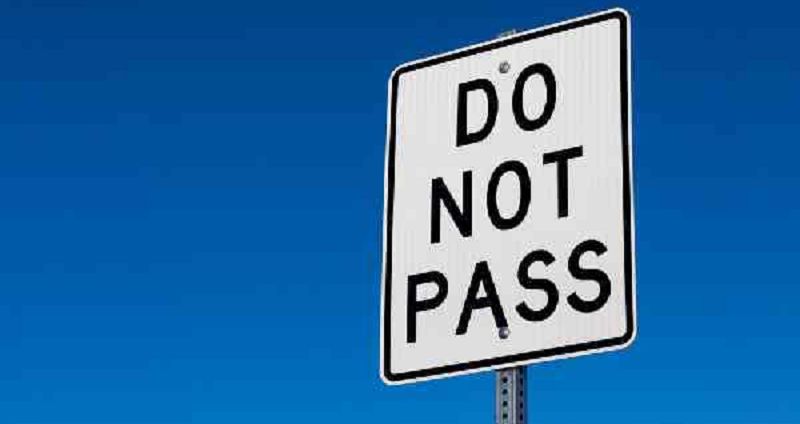
This is a “do not pass” sign. You as a driver should know that:
A. That you must not pass another vehicle where these signs are posted
B. That you may pass a slow-moving vehicle here if you can pass quickly
C. That it’s all right to pass here if you “know the road ahead”
D. That it’s all right to pass here at night when the headlights of oncoming traffic can be seen
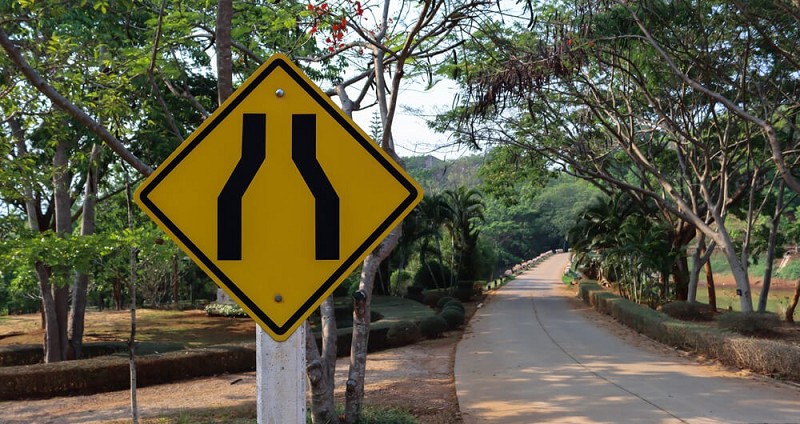
This sign means:
A. Narrow bridge
B. Lane ends or roadway narrows
C. Industrial area
D. Freeway on-ramp
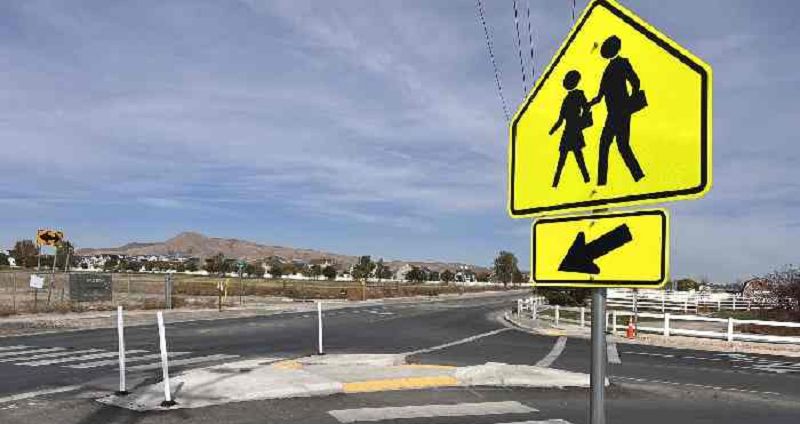
This sign means:
A. School zone
B. School crossing
C. Pedestrian crossing
D. Children in road
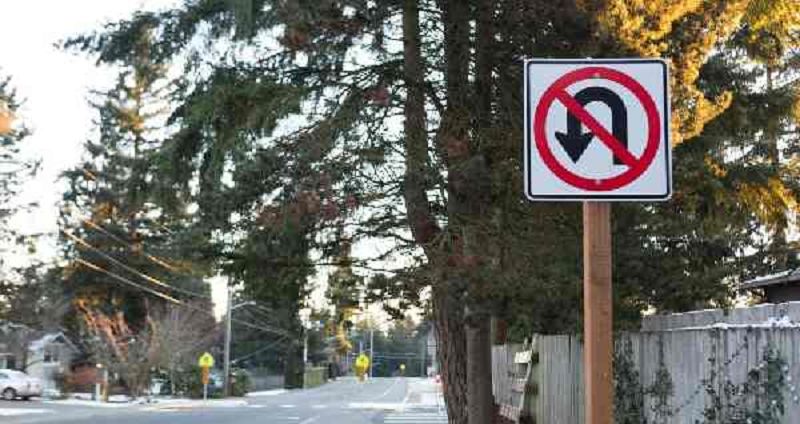
This sign means:
A. No U-turn
B. U-turn permitted
C. Winding road
D. Sharp left turn
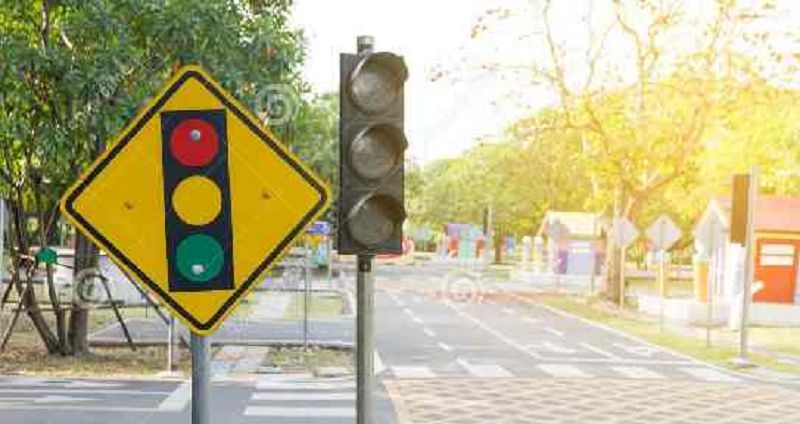
This sign means:
A. Lane signal
B. Lane closed for traffic
C. Railroad crossing ahead
D. Traffic signal ahead
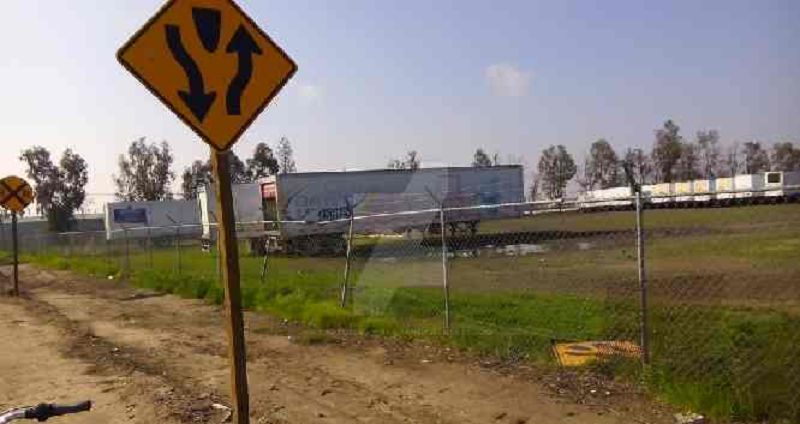
This sign means:
A. One-way traffic
B. Divided highway ahead
C. Two-way traffic
D. Keep left

This sign means:
A. Trucks only
B. Truck entering highway
C. Hill
D. Trucks have the right-of-way
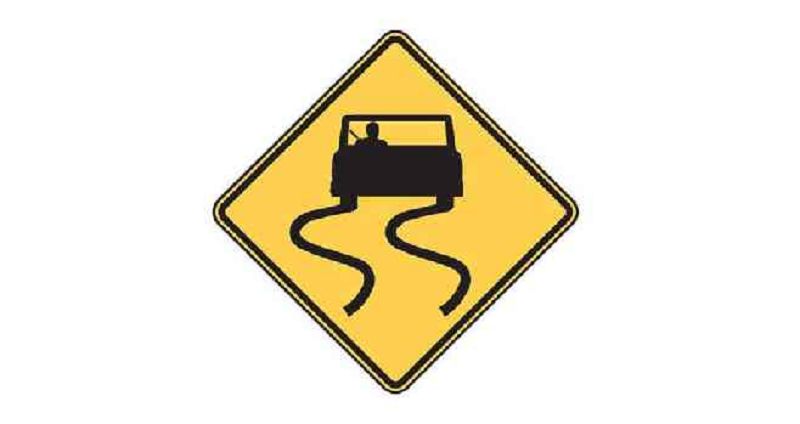
This sign means:
A. Slippery when wet
B. Watch for drunk driver
C.Dangerous curve
D. Dump in the road ahead
Two solid, double, yellow lines down the center of a street indicates:
A. Two-way traffic traveling in opposite directions
B. No passing in either directions
C. Passing is allowed in both directions
D. Both “a” and “b”
Which line is used to mark the outer edge of the road?
A. Broken yellow line
B. Broken white line
C. Solid yellow line
D. Solid white line
Stop lines are solid white lines painted across the traffic lanes at ____ and ____, indicating the exact place at which to stop
A. Curves; hills
B. Churches; schools
C. Intersection; pedestrian crosswalk
D. Freeway on-ramps; fire station
You are driving on a multi-lane roadway. The center lane is formed by a combination of yellow solid and dashed lines similar to the lines on Back Road near Garapan. You as a driver should know:
A. That this marked lane is used for passing only
B.That this marked lane is used only for left turns by traffic traveling in either direction
C. That this mark has no meaning so you may go if you want
D. None of the above
You are driving on a four-lane divided highway. You should know that:
A. White lines separate lanes of traffic moving in the same direction]
B. White lanes lines separate lanes of traffic moving in the opposite direction
C. Yellow lines separate lanes of traffic moving in the same direction
D. None of the above
You are permitted to cross a double center line to pass if the line on your side is a:
A. Solid white line
B. Solid yellow line
C. Broken yellow line
D. Broken white line
You may drive off of the paved roadway to pass another vehicle:
A. If the shoulder is wide enough to accommodate your vehicle
B. If the vehicle ahead of you is turning left
C. Under no circumstances
D. If the there is a broke white line on your side of the street
The operator of a vehicle about to be overtaken and passed by another vehicle approaching from the rear shall:
A. Stop for the vehicle to pass by
B. Speed up so as not to be passed by the overtaking vehicle
C. Not increase the speed of his or her vehicle but rather give way to the overtaking vehicle
D. None of the above
The CNMI’s “Basic Speed Law” essentially says that:
A. You may do as you wish if you have good intentions
B. You must have your car under control at all times
C. You may do as you wish if weather conditions and traffic conditions permit
D. You may not drive faster than is safe and prudent for existing conditions, regardless of posted speed limits
Speed limits indicate:
A. The fastest you may go
B. The fastest you may go if your car is in good condition
C. The fastest you may go if weather conditions, road conditions, traffic conditions, and the condition of your car are ideal
D. The slowest you may travel
You wish to exit the freeway at this exit. The exit speed shown on the sign is the speed at which you should:
A. Slow to before leaving the freeway
B. Slow to while on the freeway exit ramp
C. Never go slower than this speed on the exit ramp
D. Never go faster than this speed anywhere on the exit ramp
The speed limit when passing a public transit vehicle that is taking or discharging passengers is:
A. 5 miles per hour
B. 10 miles per hour
C. 20 miles per hour
D. You may not pass a public transit vehicle that is taking or discharging passengers
The CNMI Driving Code requires an interval of:
A. At least 8 feet between vehicles for every 10 miles per hour
B. At least 8 feet between vehicles for every 20 miles per hour
C.At least 10 feet between vehicles for every 10 miles per hour
D.At least 10 feet between vehicles for every 20 miles per hour
While driving you come upon a sign which says “reduced speed 35 MPH”. You as a driver should know:
A. That the new 35 MPH speed zone begins at this sign
B. That the new 35 MPH speed zone begins at the next “speed limit” sign
C. That you have plenty of time to slow down before the speed zone
D.That the sign is put there to harass “good” drivers
All headlamps on your vehicle must work properly and be correctly adjusted:
A. When driving in city traffic
B. At all time
C. When driving on freeways
D. When approaching other vehicles
You are driving at night and another vehicle is approaching. Your headlamp:
A. Should be on high beam
B.Should be on low beam
C. Should be off, use your parking lights
D.May be on either high or low beam
In night driving, you must dim your lights when approaching a vehicle from behind at least:
A. 200 feet away
B. 300 feet away
C. 400 feet away
D. 500 feet away
A vehicle is driving with only its parking lights on. This is:
A.Permitted for half an hour after sunset or half an hour before sunrise
B. Against the law at all time
C. Permitted if conditions are foggy
D. Permitted if it is raining
Hazard warning signals (4-way flashers) are intended to warn other drivers that a vehicle is in a hazardous position on the roadway. The signal should be used when:
A. Driving through a tunnel
B. Driving a heavy truck or bus up a hill
C. Performing emergency vehicles maintenance on the road shoulder
D. Both “b” and “c”
When driving in a fog it is best to drive with:
A. High beam headlights
B. Low beam headlights
C. Four-way (emergency) flashers
D. Parking lights
If you have an accident, what should you do?
A. Stop, help, give and get information
B.Stay in your car
C.Drie to the nearest police station
D. Continue on your way if there is less than $50 worth of damage
You are involved in an accident. Another person is injured. You should:
A. Move the injured person away from the scene of the accident immediately
B. Always leave the injured where they are
C. Not move the injured unnecessarily. Keep him/her warm and provide first aid
D.Stay away from the accident
You are involved in a minor accident and your vehicle is blocking traffic. You should:
A. If possible, move your vehicle off the traveled portion of the roadway
B. Not move your vehicle under any circumstances
C.Wait until the police arrives before you move your vehicle
D. None of the above
You inadvertently drive your vehicle into the side of an unattended parked vehicle and you cannot locate the vehicle’s owner. You as a driver:
A. Have done as much as you can
B. Must stay until the police arrives
C. Must leave a written notice containing your name and address and circumstances of the accident
D. May go on your way
You are driving and have a tire blowout. You should:
A. Slam on your brakes
B. Keeping going
C. Hold your steering wheel firmly and steer to the shoulder
D. Turn on your emergency flashers
While driving, your wheels slip off the edge of the road. You should
A. Jerk the steering wheel to force the vehicle back onto the pavement
B. Speed up and steer back onto the pavement gradually
C. Slam on your brakes and stop
D. Slow down using the brakes gently, when at a safe speed, turn the steering wheel to return to the pavement
You are driving on a busy street and your vehicle’s accelerator sticks open. You should:
A. Blow your horn
B. Slam on your brakes
C. Turn on your hazard warning lamps
D. Turn off your ignition, taking care not to engage the steering locking mechanism
You are driving and suddenly your power steering is gone. You should:
A. Honk the horn and turn off the ignition
B. Turn on your hazard warning lights and brace yourself
C. Work hard to steer, reduce speed, drive to a safe area and stop
D.Slam your brakes
E. Pedal to the metal
{"name":"Driver's License Test 3A", "url":"https://www.quiz-maker.com/QPREVIEW","txt":"Test your knowledge of road signs, traffic signals, and safe driving practices with our comprehensive Driver's License Test 3A. This quiz features 50 carefully crafted questions that will help you prepare for your driving exam.Whether you're a new driver or looking to refresh your knowledge, you'll find the following:Detailed multiple-choice questionsInstant feedback on your answersUseful for all levels of driving experience","img":"https:/images/course6.png"}
More Quizzes
Driver's Test Practice!
13634
Permit test
6319
Aquatic Ecosystems
10513
Literary Elements
11645
Fort Sumter & South Carolina Trivia - Free Online
201019429
Pin Curl Bases & Movement - Cosmetology
201016997
Pathology Prefix and Suffix - Medical Terminology
201018138
Football Trivia - Test Your Knowledge Online
201015936
Body Swap - Your Identity After the Great Shift
201016936
Serial Killer Trivia - Test Your True Crime Knowledge
201021002
Endocrine System Assessment - Free Nursing Practice
201020577
Do I Have Sleep Paralysis? Free With Instant Results
201017850